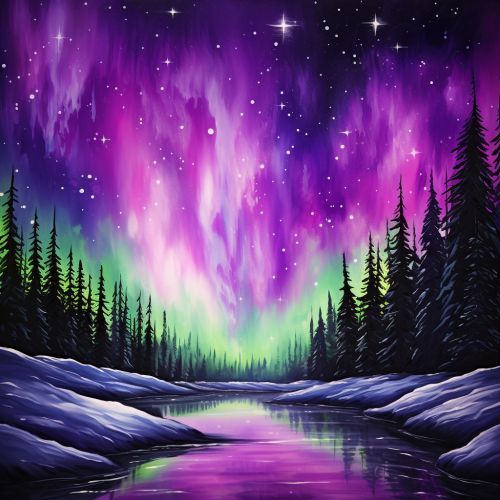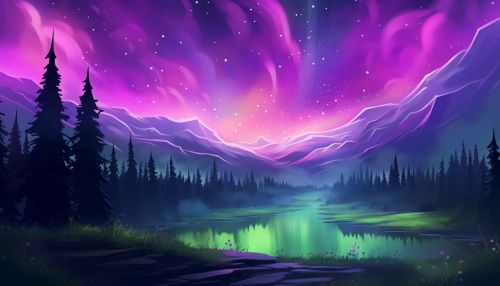Aurora Borealis
Introduction
The Aurora Borealis, also known as the Northern Lights, is a natural light display predominantly seen in the high-latitude regions around the Arctic and Antarctic. The phenomenon is caused by disturbances in the magnetosphere triggered by solar wind, which alters the trajectories of charged particles in both solar wind and magnetospheric plasma. These particles, mainly electrons and protons, precipitate into the upper atmosphere, where their energy is lost. The resulting ionization and excitation of atmospheric constituents emit light of varying color and complexity.


Formation
The formation of the Aurora Borealis begins at the sun. The sun emits a constant stream of charged particles known as the solar wind. This wind carries with it the solar magnetic field. When the solar wind reaches Earth, it interacts with Earth's magnetic field, causing a transfer of energy and particles. This interaction is what causes the auroras.
Solar Wind
The solar wind is a stream of charged particles released from the upper atmosphere of the Sun, called the corona. This plasma consists of mostly electrons, protons and alpha particles with kinetic energy between 0.5 and 10 keV. The solar wind varies in density, temperature and speed over time and over solar longitude. These solar wind conditions are known as solar wind regimes.
Earth's Magnetosphere
The Earth's magnetosphere is the region of space surrounding Earth where the dominant magnetic field is the magnetic field of Earth, rather than the magnetic field of interplanetary space. The magnetosphere is formed by the interaction of the solar wind with Earth's magnetic field. This dynamic, complex system stretches from the Earth and extends well past the orbit of the Moon. It acts as a barrier to protect Earth from solar wind particles.
Ionization and Excitation
When the charged particles from the solar wind reach the Earth's atmosphere, they collide with atoms and molecules, ionizing or exciting them. This ionization and excitation process involves the movement of the atoms or molecules from a lower energy state to a higher energy state. When these atoms and molecules return to their normal state, they release photons, which we see as the colorful display of the Aurora Borealis.
Colors of the Aurora
The colors of the Aurora Borealis are a result of the type of gas particles that are colliding. The most common auroral color, a pale yellowish-green, is produced by oxygen molecules located about 60 miles above Earth. Rare, all-red auroras are produced by high-altitude oxygen, at heights of up to 200 miles. Nitrogen produces blue or purplish-red aurora.
Viewing the Aurora
The best places to watch the Aurora Borealis are in the high-latitude regions around the Arctic and Antarctic. The aurora can be seen from both the northern and southern hemispheres. However, in the northern hemisphere, it is known as the Aurora Borealis or Northern Lights, and in the southern hemisphere, it is known as the Aurora Australis or Southern Lights.
